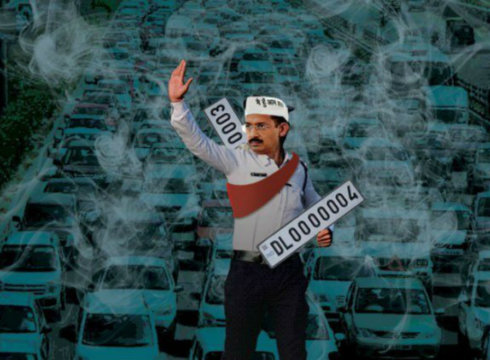Inc42 Daily Brief
Stay Ahead With Daily News & Analysis on India’s Tech & Startup Economy
What date is it? Wait, is the license plate yellow? Oh yes, there’s a violator. Oh no, it’s a woman driver! Your turn!
This game is a lot of fun and secretly, everyone enjoys being a vigilante. Honestly though, pointing out the violator doesn’t even solve anything.
Not everyone can be Batman and actually go after the bad guys (can’t go after girls here :p).
At SquadRun, we’re really appreciative of this idea. We’ll go with the startup cliché and say that ideas come a dime a dozen and it’s the execution that matters. Oh, and solid execution at scale is what makes you a unicorn (for the uninitiated, Unicorns are startups with $1 bn+ ‘on-paper’ valuations).
So let’s talk about execution here. The government’s solution was what we call an MVP (Minimum Viable Product – demonstrates proof of concept). You set up 200 barricades and hand out roses to violators and viola; you just demonstrated proof of concept. Everyone’s rejoicing the reduced traffic and is tweeting about making record time from Delhi to Gurgaon. Everyone’s happy!
Here comes the hard part – how will you do this with 88 lakh+ vehicles in Delhi? It is impossible for the traffic police to do this on a daily basis – there is only so much the human eye can monitor.
At SquadRun, we are awesome at breaking down large scale operational problems – we do this every day for some of the largest consumer businesses globally. So here we are, playing this game on our way to a team outing and suddenly, our team cries out loud in unison – “Let’s solve this using crowdsourcing!”
We get this done through a distributed mobile workforce of college students, young professionals, housewives, etc. who work on SquadRun’s mobile app, doing tasks such as moderating reviews, tagging images, calling restaurants to collect information, and testing out new products etc.
The problem here is much easier to solve – check the date, check the number plate, check for exceptions and you have a violator.
Here’s our solution to implementing the odd/even rule in Delhi:
Step 1: Figure Out Where To Get Pictures?
- Directly integrate with the traffic police traffic camera database via our APIs
- Using an in-app camera, get people to click pictures – ensure timestamps get captured – crowdsource information capture
- Automatically, only include images which are within the timestamps 8am to 8pm
Step 2: Check For Odd/Even Violation – Super Easy
- Today is 13th January so just check if the number plate is odd. If it is, press YES on the app screen
Step 3: Take The List Of Violators From Step 2 & Check If The Image Is Of A Vehicle Which Is On The Excluded List
- Is it a commercial vehicle? Is it an ambulance? Is there a woman driver (this one’s slightly hard and will depend on image quality)? – press the appropriate option on the app screen.
- If not, move it along to transcription
Step 4: Transcribe the number plate and feed it back to the traffic police database – everything happens via APIs
Step 5: The traffic police can send out a challan based on this information
How do you ensure accuracy: We’ve built in a lot of systems and checks which include both sampling and maker-checker algorithms to ensure accuracy. Once people join our platform, we have qualification work at our backend, we first have qualification have algorithms to match the work to the worker. We track people’s key skills and match the work according to these skills to ensure great accuracy.
How do we do this at scale: We have over 40,000+ registered users today. Let’s assume the following breakdown:
Given the scalability of our system, we can do this real time, doling out challans for the traffic police like a boss! If the number of offenders is at even at 1% of the number of cars on the road (i.e. 22,000), the potential revenue through challans for the government is north of Rs 4 crores per day. Only a fraction of this revenue is going to go into paying for this exercise.
This is how we’d do it. It’s obviously not foolproof (feel free to poke holes). Even we are trying to figure out the most efficient workflow for this, at scale. However, the one thing we’re confident on the ability of our systems to handle this – we have the tech, we have the product and we have our distributed workforce. What we now need is the support of the Government to push this forward.
If you have a large operational problem that requires a Human API, just give us a shout!
Note: We at Inc42 take our ethics very seriously. More information about it can be found here.


